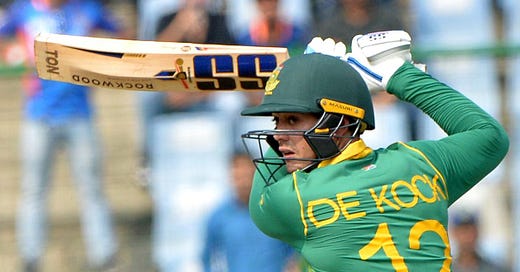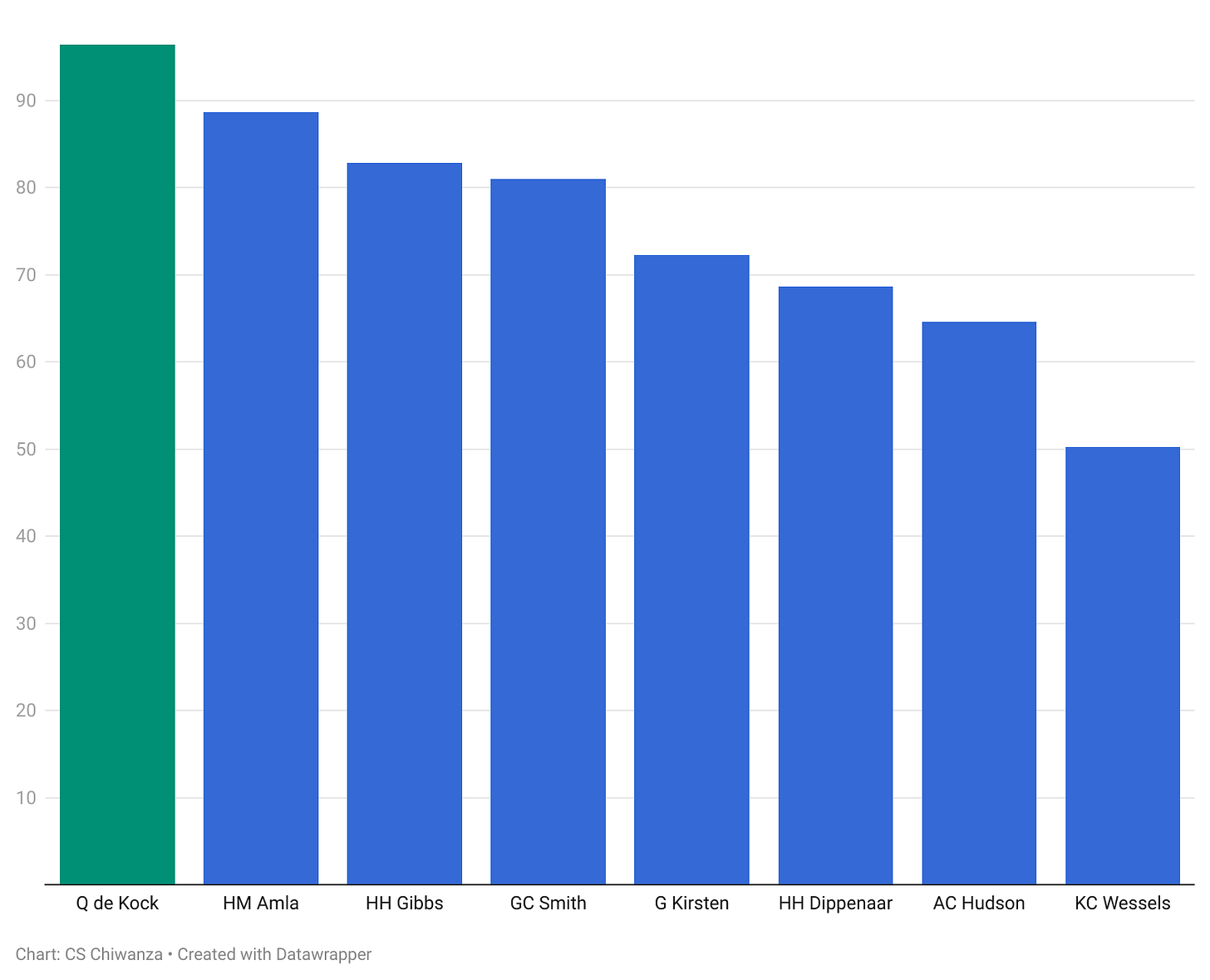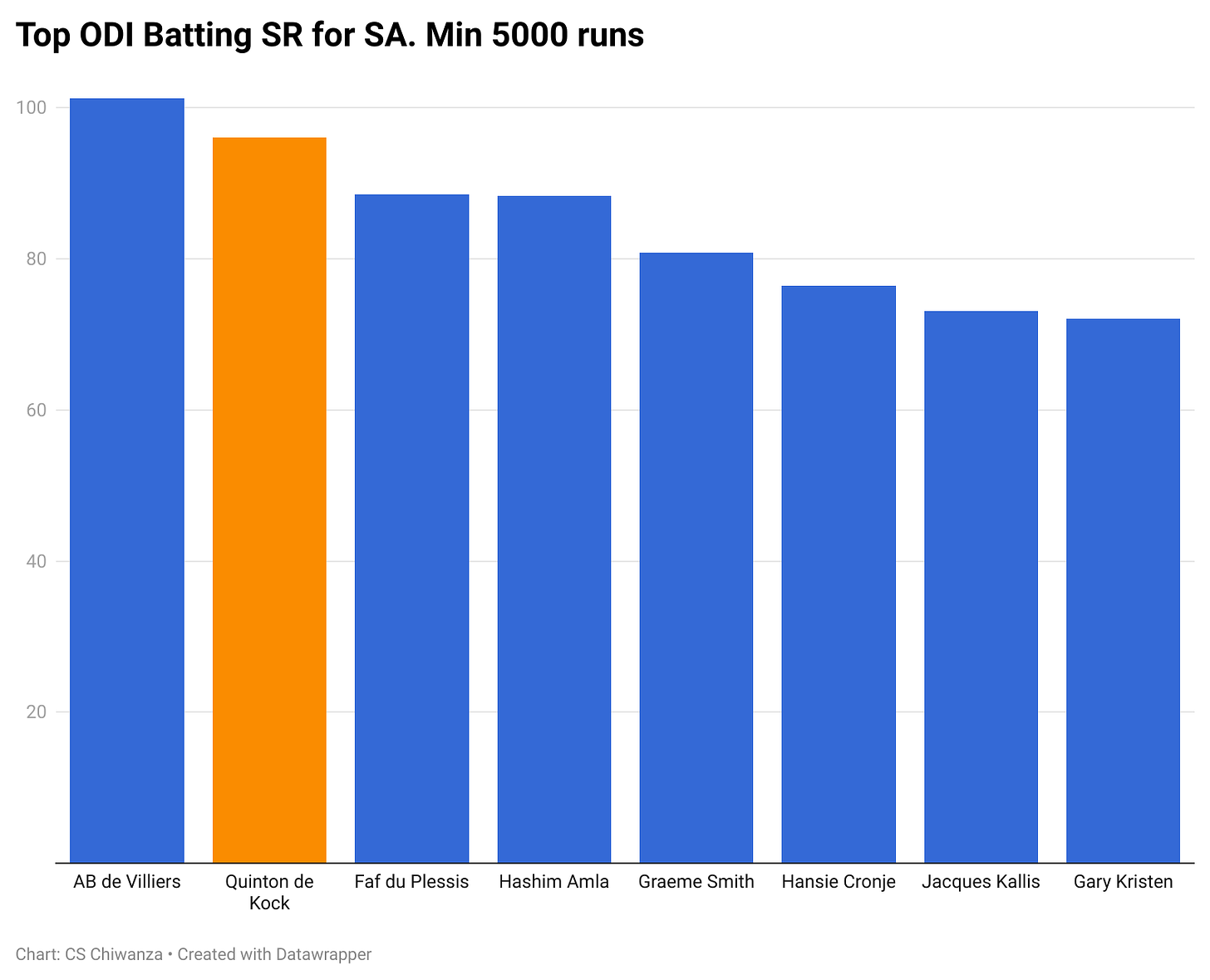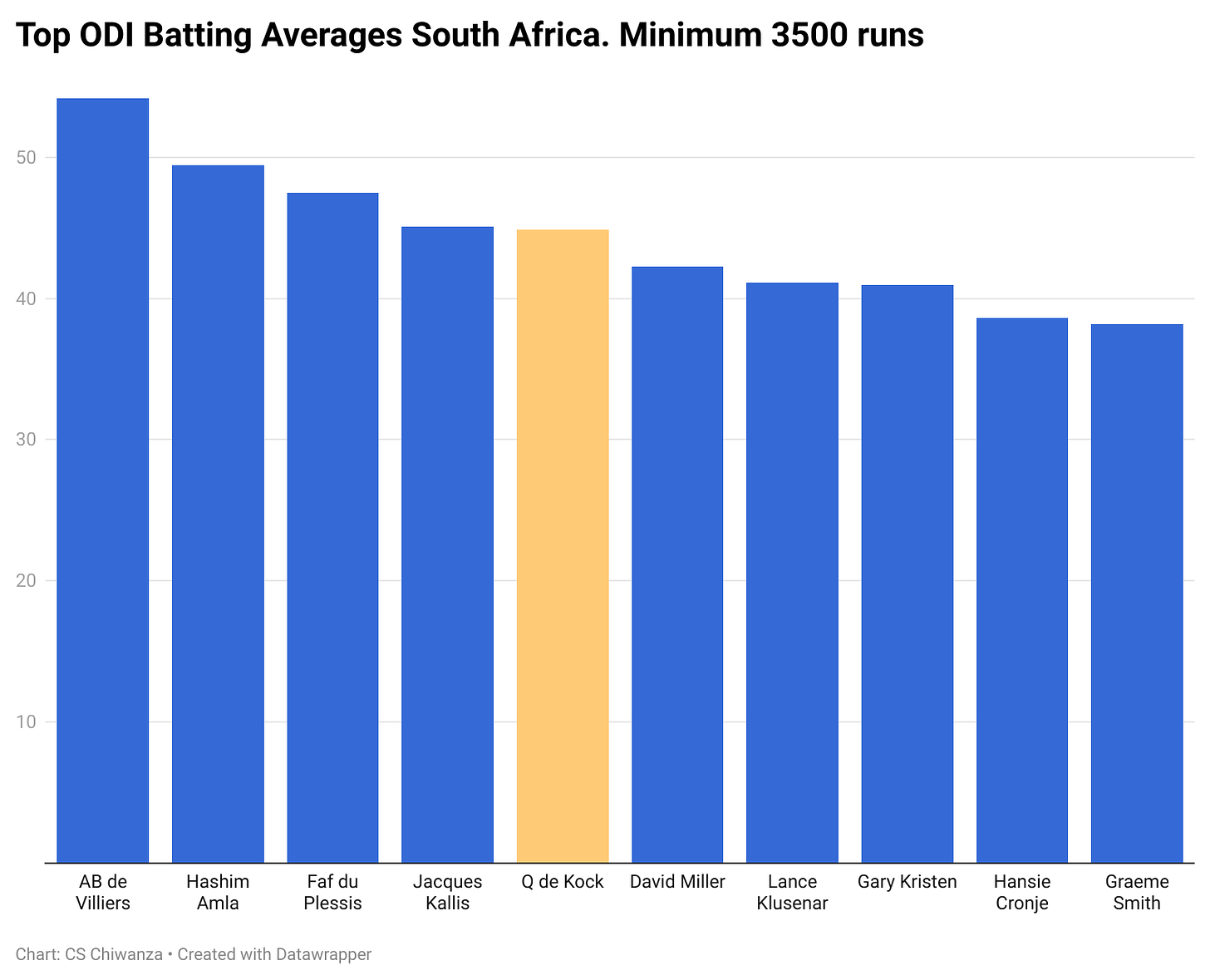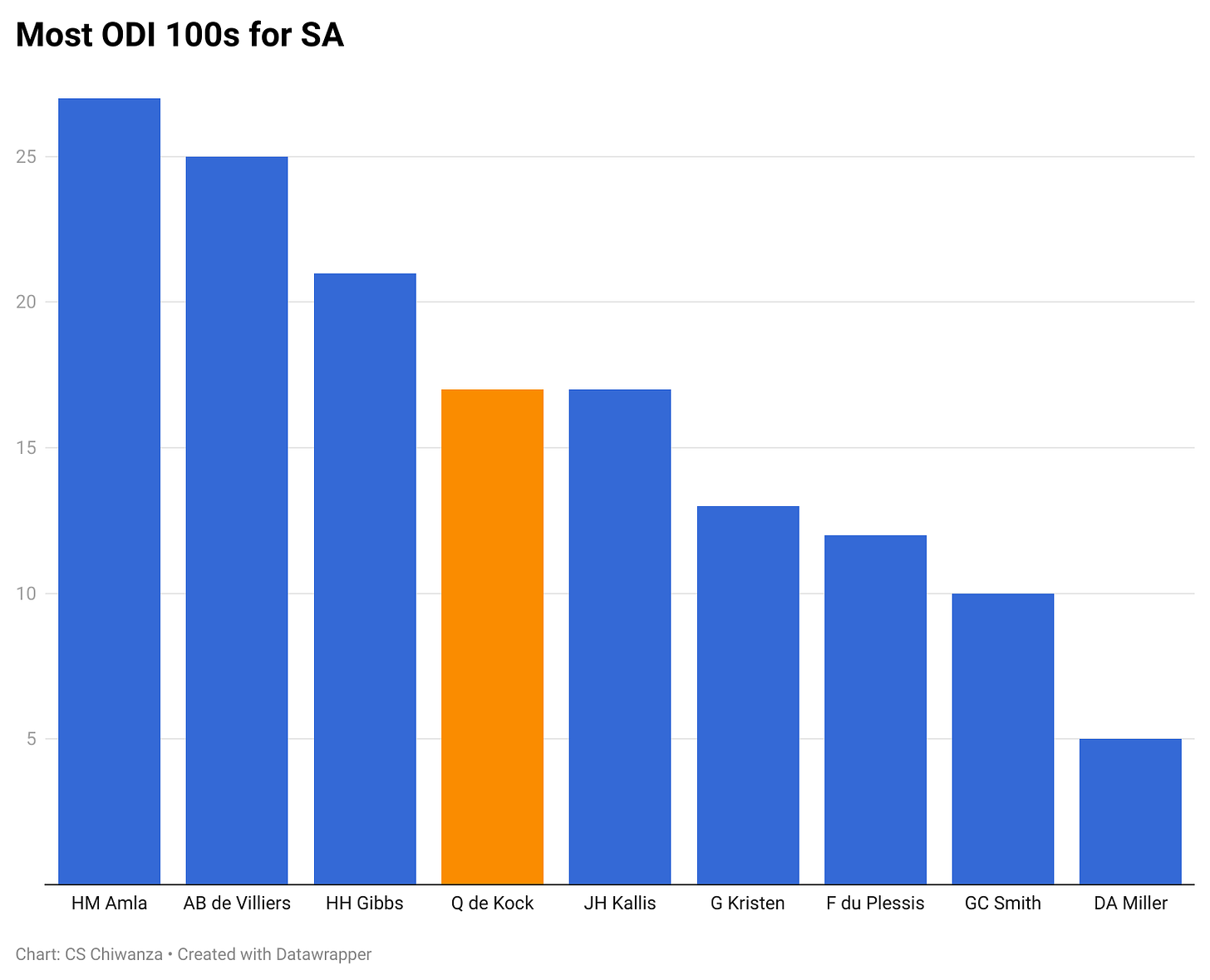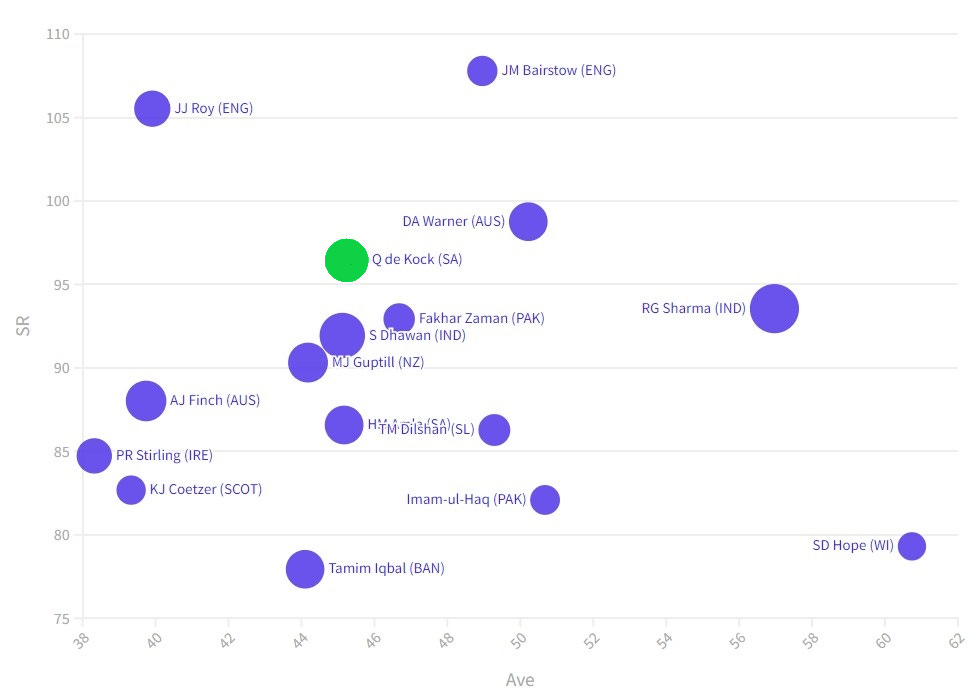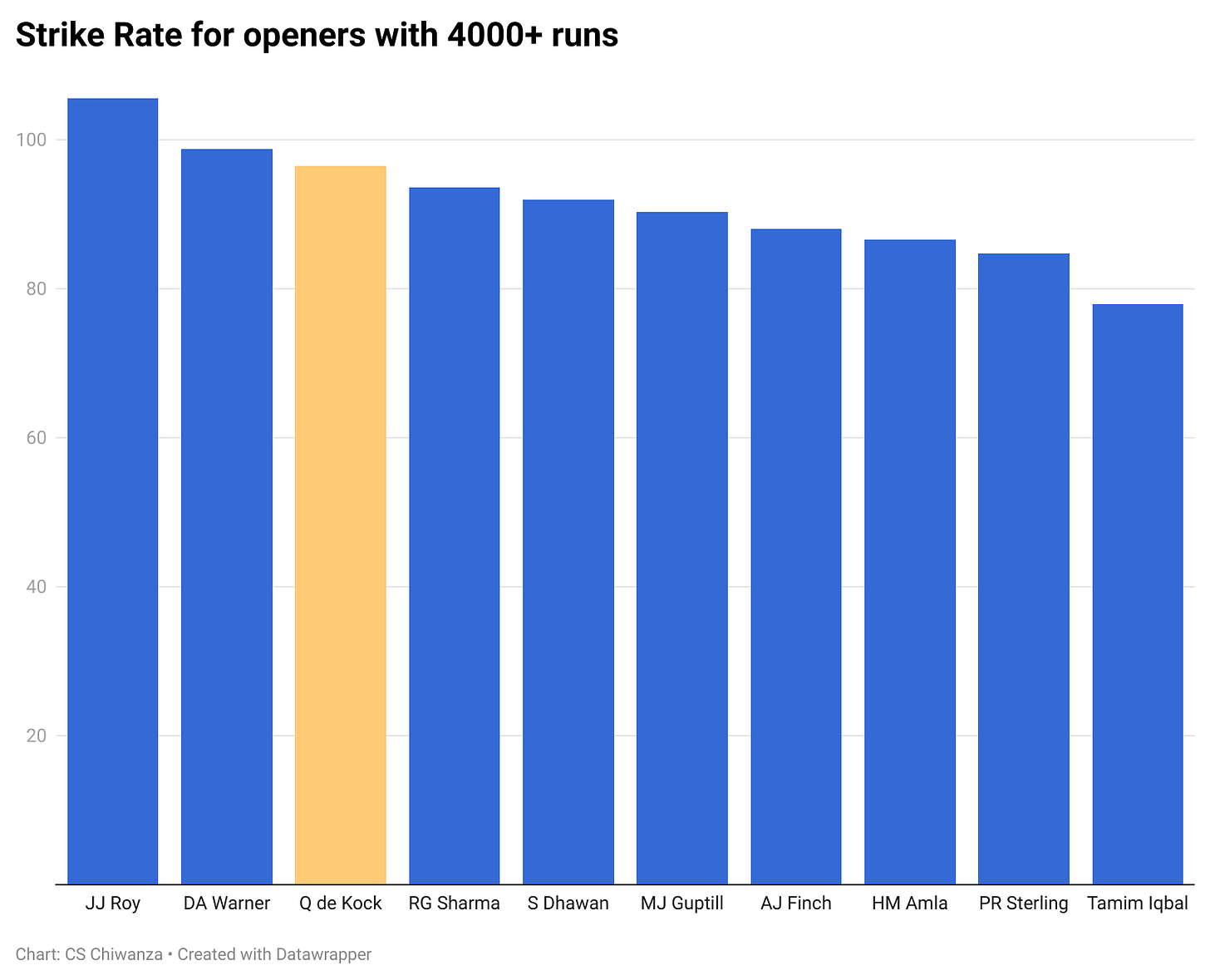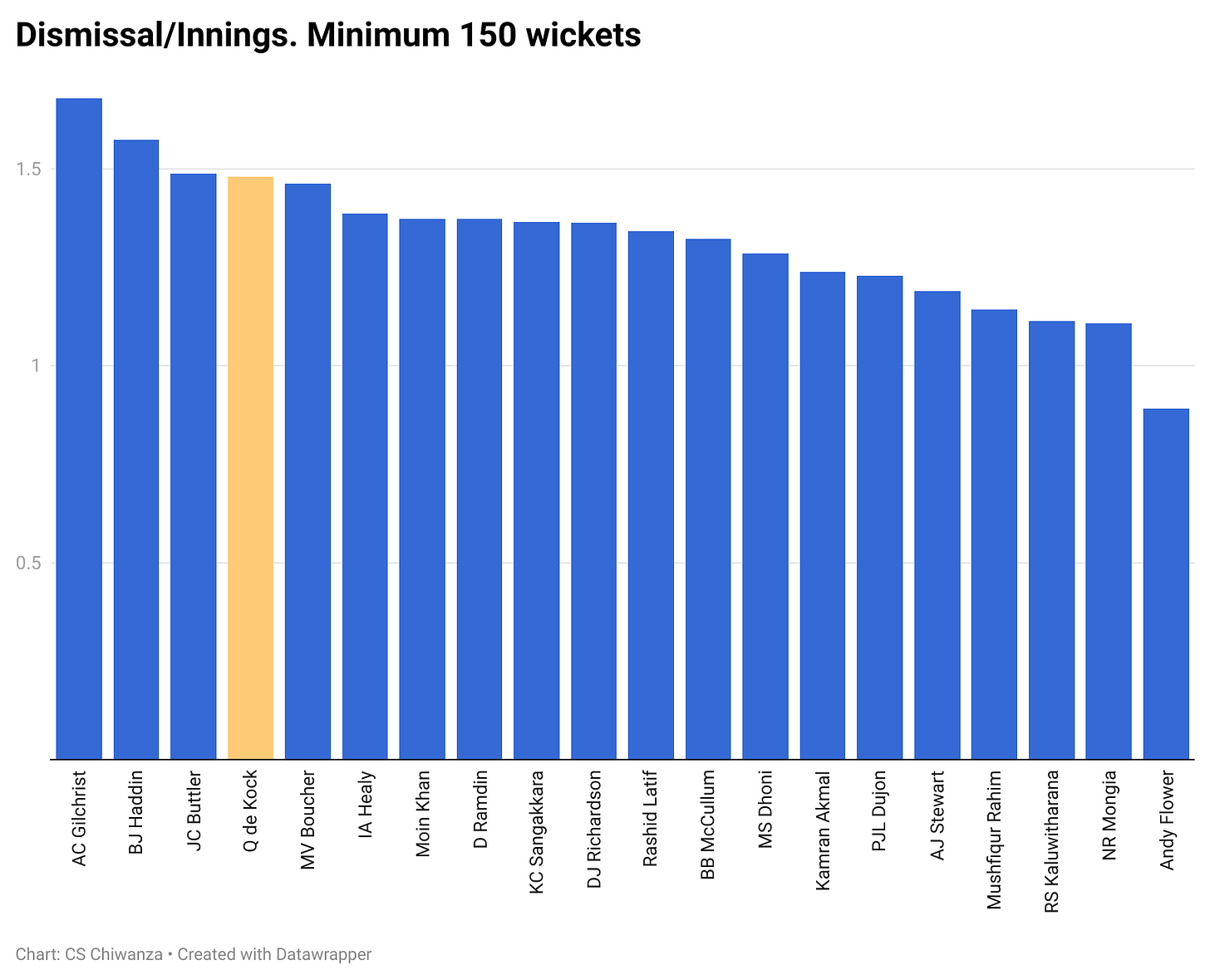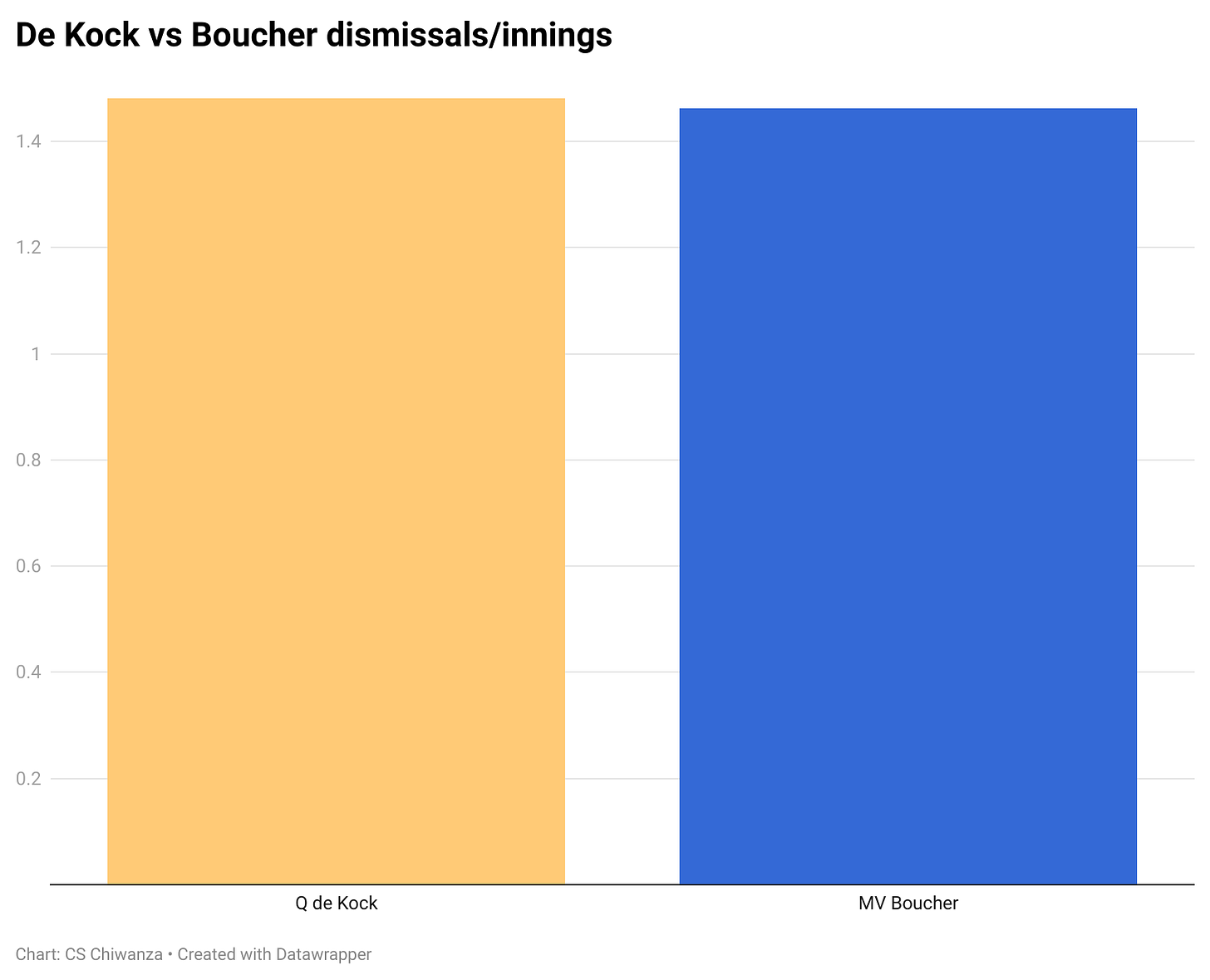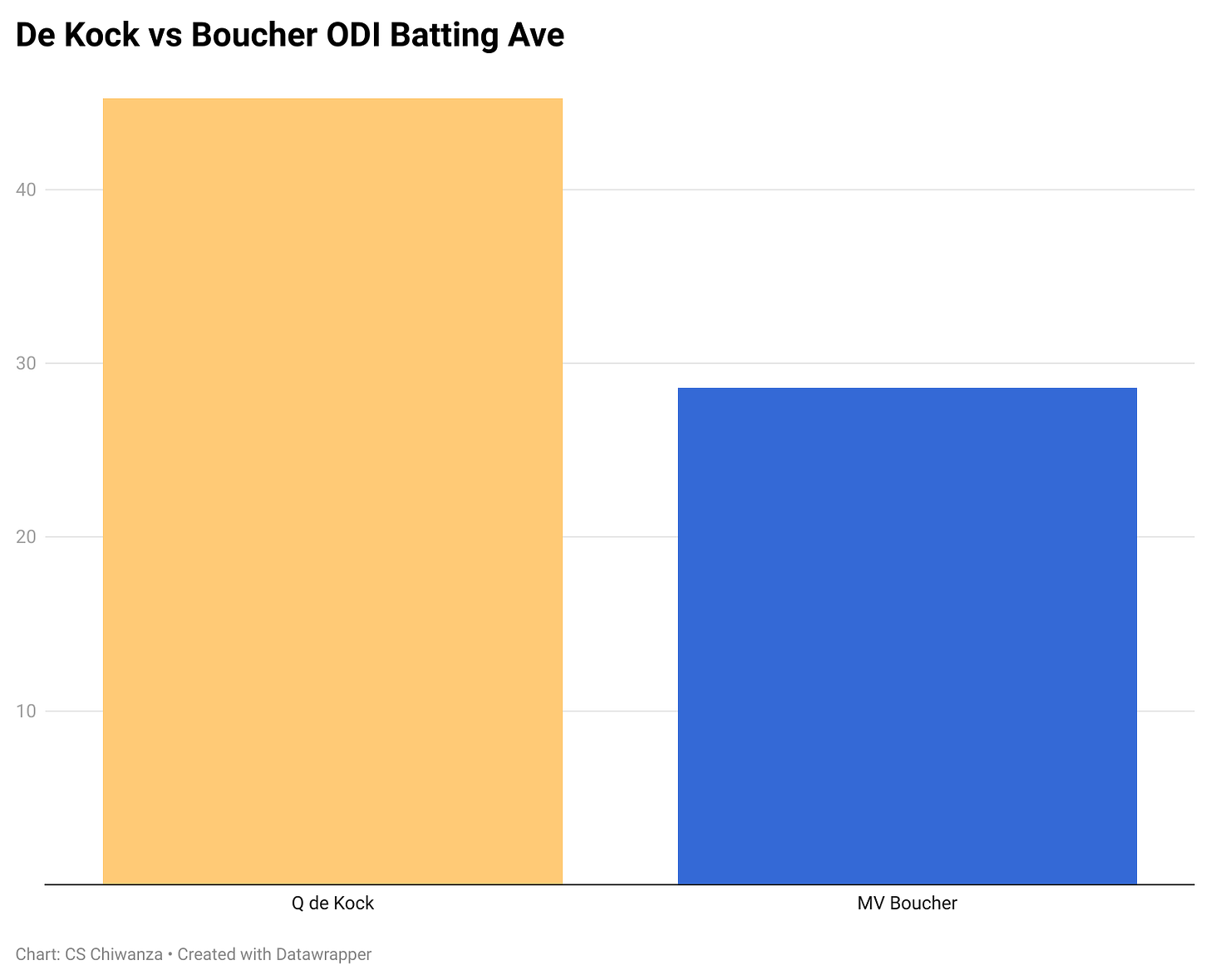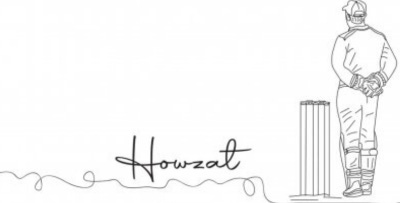De Kock's Final Lap
Quinton de Kock rides off into the sunset on a T20 white horse, leaving ODI fans wanting more
This article would not have been possible without the help of my friend,
. He came through with most of the statistics. It’s a feat of teamwork.Quinton de Kock chose to walk out to bat without a thigh pad. He felt he had no need for it because he had never been hit there before. Shane Burger stared in disbelief at that decision. De Kock left Burger and the rest of his teammates gawking after he dispatched Kabir Ali for six over the site screen off the first delivery he faced. De Kock even had the temerity to walk at him before he released the ball. You could have picked a few jaws from the Gauteng team’s dressing room floor.
That was in 2008. De Kock was a few months shy of his 16th birthday. He didn’t just attack Kabir Ali, he also dominated the bowling of Steve Harmison, Liam Plunkett, and Graham Onions on his way to 72 off 87 deliveries. De Kock didn’t just have an exceptional game with the bat, he was also outstanding with the gloves. A star was born.
Dazzled by the glow of de Kock's rising star, Durham tried to get ECB to sign him. They were seeing what Grant Morgan and those close to de Kock had seen for years. By the age of 15, people were talking big about him. The consensus was that de Kock would go on to be a world-class player for the Proteas.
“I first saw him play when he was around 11 or 12,” says Stephen Cook, whose family greatly influenced his development as a youngster. At 11, De Kock attended a training camp held by Jimmy Cook, Stephen’s father, and he played under Ryan Cook, Stephen’s brother and current Netherlands head coach, at King Edward VII School (KES). “He had an incredible eye for the ball. You can’t tell if a youngster will progress, but with the way he dominated bowlers relentlessly, I knew he had a good chance.”
De Kock progressed, and then some. He built his game around dominating bowlers. In conservative South Africa, there were questions on whether he was attacking or reckless because more often than not, he lost his wicket trying to clear the boundary. In time, he learned to balance his naturally aggressive style of play, without being reckless.
This newsletter is completely reader-supported. If you’re willing and able, please consider supporting it in one of two ways, leaving a tip or becoming a Patreon. Thank you so much for your time and investment!
A year after taking down Durham, de Kock made his List A debut for the DP World Lions - they were called the Highveld Lions at the time. In his first One-Day Cup match for them, he scored a sensational 83. In 2010, he scooped the Cricketer and Batsman of the Tournament awards for his dominance at Khaya Majola Week. During his time with the SA Under-19 team, de Kock torched bowling attacks. He scored 1409 runs at an average of 48.58, at a strike rate of 98.53.
At 20, de Kock made his ODI debut and somehow managed to squeeze in four centuries into his first year as an ODI player. Three of those centuries were consecutive, making him the fifth player to score three in a row after Zaheer Abbas, Saeed Anwar, Herschelle Gibbs and AB de Villiers. It was a sign of things to come.
As he takes his final lap after 10 years of ODI cricket, de Kock is one of the most dominant openers for South Africa with the highest strike rate. De Kock scores at an impressive 96.44. The next best batter is Hashim Amla with a strike rate of 88.65.
De Kock is not just the most destructive opener in South African cricket, he has the second-highest strike rate among South African batters with 5,000 or more runs.
With that strike rate, it's easy to think of him as a weekend slogger or PowerPlay bully. No. De Kock also has the fifth-best ODI average for South African batters with at least 3,500 runs to their name.
To further underline the fact that de Kock hasn’t just been hitting the ball hard, he has also been scoring big. He is currently joint fourth for the most ODI centuries for South Africa.
De Kock’s figures are not only great in the South African context. They also hold well in ODI cricket globally. If you compare him to batters in similar roles during his era in ODI cricket, de Kock's numbers just look silly. He has the fourth-highest strike for opening batters with a minimum of 2500 runs.
When you further narrow that down to opening batters with at least 4,000 runs, de Kock's numbers become even sillier. He has the third-highest strike rate.
It's not just his batting that's off the charts. De Kock made wicketkeeping sexy. Throughout his career, de Kock has resolutely refused to let go of the gloves. Keeping wicket keeps him in the game at all times and gives him an opportunity to have an impact beyond batting. De Kock has been outstanding with the gloves. He has the third-best dismissal per innings numbers among wicketkeepers with 150 or more ODI wickets.
What I am about to say sounds sacrilegious, even to myself. In my mind, Boucher has always been more fitting of the title of South Africa’s greatest ODI wicketkeeper-batter. But, de Kock narrowly beats Boucher on dismissals per innings. Against what I assumed, De Kock goes down in history as South Africa's best wicketkeeper-batter in ODIs.
With the bat, there is daylight between de Kock and Boucher. De Kock and Boucher’s batting averages are not even in the same postcode. It’s better if we don’t speak of their strike rates at all.
As he rides into the ODI sunset, there are a few things to consider about de Kock's retirement from the format. ODIs have lost their lustre, since 2020, South Africa has played 33 ODIs and de Kock has featured in 25 of them. In his first two years with the Proteas, de Kock played 35 ODIs. Dwindling fixtures in the face of T20 franchises taking more real estate on the calendar is not the format's only problem; if what people say on social media is anything to go by, ODIs are losing popularity.
When de Kock made his first-class debut, Grant Morgan asked him to bat at number seven. It wasn’t that de Kock could compete for one of the opening slots, Morgan wanted de Kock to feel as if he had earned the right to open when he was promoted up the order. De Kock applied himself and earned the right to open. Now, 14 years after his first professional match, de Kock is exercising his right to play cricket on his own terms. Morgan feels de Kock has earned that right.
De Kock has been outstanding for South Africa in ODIs. And as he did when he retired from Test cricket, de Kock leaves fans wanting more.
If you found this interesting, please share it:
You can support Stumped! by leaving a tip:
Thanks for reading. Until next time… - CS


